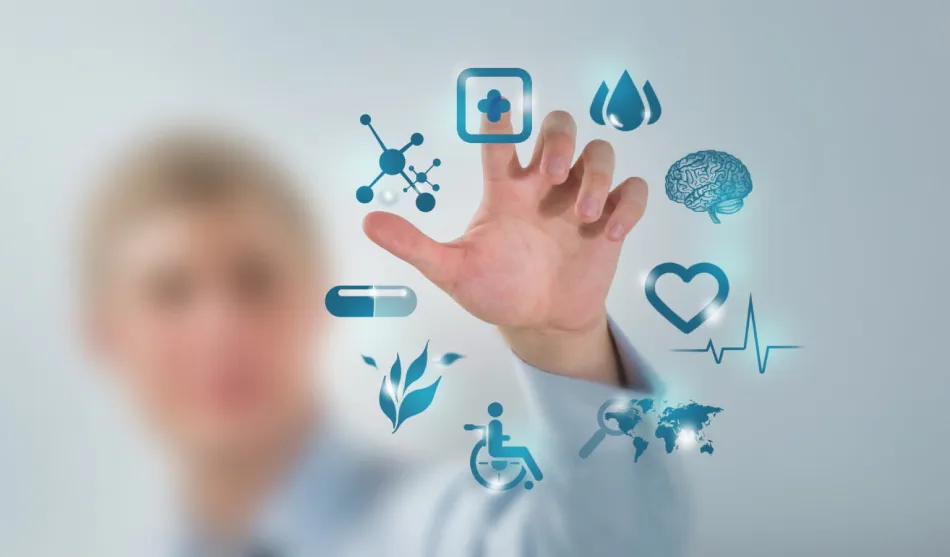Innovation is altering medical care in numerous ways. From telemedicine to wearables, it’s making it more straightforward for patients to assume responsibility for their wellbeing and for specialists to convey treatment.
For example, a pregnant lady never again needs to go through amniocentesis or chorionic villus inspecting (both obtrusive methods) for pre-birth testing.Instead, she can use noninvasive blood or urine samples.
Robotics
From medical robots that aid doctors during surgery to robots that help humans walk again in physical therapy, robotic technology is rapidly advancing and playing a significant role in healthcare today. Streamlined workflows, risk reduction, and increased efficiency enable medical professionals to spend more time directly helping patients.
Surgical robots like the da Vinci Surgical System are commonly used in surgeries, but healthcare robots also work in laboratories to take samples and transport or analyze them. If a patient needs blood drawn, a robotic lab assistant can find the best vein quickly and draw the sample with minimal pain for the patient.
Healthcare robots can also disinfect rooms or wards safely while limiting person-to-person contact. They can even dispense medicine to patients in hospitals, using AI-enabled medicine identifier software. Eventually, these robots may function entirely autonomously and do so on an ongoing basis.
Telehealth
Telehealth refers to healthcare-related activities conducted over telecommunication technologies. It is utilized to work on understanding results and give more admittance to the mind. It tends to be done from a distance or on cell phones.
The capacity to speak with specialists over a video gathering has made it a lot more straightforward for patients to get the medical care they need without the problem of exploring swarmed lounge areas or long telephone standby times. This has additionally prompted more effective clinical records, which have been improved even by the utilization of innovations like man-made consciousness and 3D printing.
Advanced mechanics have significantly impacted how the medical procedure is performed, making them more precise and less intrusive than at any other time. They can access areas of the body that are hard for humans to reach, allowing for more successful surgeries. They can even replace human hands and tools in some procedures, making them safer and less expensive. This is especially useful in rural locations where patients have limited options for healthcare providers.
Virtual Reality (VR) and Augmented Reality (AR)
Virtual reality (VR) drenches clients in a virtual climate utilizing headsets. It has applications in various fields including telemedicine, patient schooling, and recovery treatment.
Clinical reenactment techniques are a typical medical service utilization of VR. Specialists and prescription understudies practice surgeries and find out about new medications and strategies in advanced conditions that mirror genuine circumstances.
AR is like VR however overlays advanced content on top of this present reality. For example, the Enchanted Jump gadget permits clients to see and cooperate with their current circumstances while wearing a headset that shows computerized content.
Other than working on instructive materials, clinical analysts use AR to test medicines for sicknesses and illnesses. For instance, Current Studios has fostered an expanded reality (AR) tablet game to assist jokes with remaining as yet during X-rays, lessening the requirement for sedation. This sets aside time and cash for the two patients and their families. AR additionally makes it more straightforward for specialists to team up, in any event, when they aren’t in a similar room.
Chatbots
What once seemed like science fiction—such as robots performing surgeries—is now becoming more commonplace. These smart technologies allow doctors to access hard-to-reach areas that human dexterity cannot, which helps ensure less intrusive systems and work quiet results.
Computer-based intelligence can likewise help medical services suppliers overwhelmingly of information to track down designs and anticipate future results, for example, when patients experience sicknesses like malignant growth or diabetes. This permits specialists to make more precise determinations and save lives.
While chatbots can assist with smoothing out client care and interface individuals to the data they need, organizations need to comprehend that these innovation instruments ought to be an expansion to existing channels and frameworks of commitment — not a substitution. This means utilizing AI-powered chatbots that integrate with, not replace, human agents. In addition, companies should look for ways to gather insightful user feedback and data through their bots. For example, Zendesk’s Answer Bot allows users to provide feedback after each interaction and lets businesses know if the bot was able to resolve their questions.

